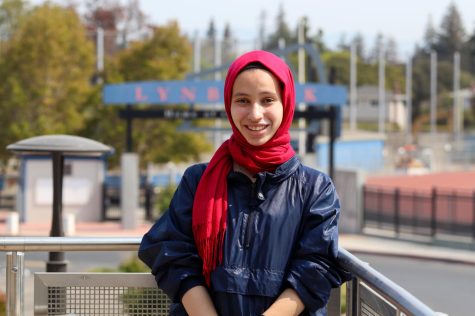Dressing for the occasion
Graphic illustration by Features Section
Disney has diversified its princess cast, continuing to rewrite the princess narrative into a collection of empowering stories instead of a collection of idealized fairy tales.
April 5, 2022
Disney’s cast of fairytale princesses have captured the hearts of audiences for years. As decades have gone by, Disney has diversified its princess cast, continuing to rewrite the princess narrative into a collection of empowering stories instead of a collection of idealized fairy tales.
Sleeping Beauty
As one of the original Disney princesses, Sleeping Beauty is the epitome of a classic princess narrative. From her-simple minded obedience to her complacency and willingness to be rescued, the classic story does not empower younger generations to challenge societal norms and forge their own paths. Adversely, the plot line condemns being strong or curious like the evil witch, who is known for being a miscast in the fairy society, is shunned and is excluded for her individuality. Similarly, with Aurora being knocked out the second she touches the needle that she was not supposed to due to her curse, the plot reinforces the idea that curiosity is frowned upon and is instead a negative characteristic.
Beauty and the Beast
From its iconic soundtrack to its authentic fairytale feel, the original animation of Beauty and the Beast will always be seen as a timeless classic. The film is further revered for the change it brought to the narrative of Disney princesses. By presenting a stronger female lead, Belle, a girl who didn’t fit into the society around her nor tried to, the story showed her independence and empowered younger viewers to do the same. It also showed a healthier representation of an ideal relationship, drawing differences between Belle’s relationship with Gaston versus the Beast.
Mulan
Mulan is a Disney story presenting a strong female lead that broke away from the majority of classic Disney movies, defying many classic princess norms, from her lack of love interests to her lack of feminine characteristics and, most importantly, her ethnic diversity from the majority of the fairytales which feature white Disney princesses. Mulan shifted the story to place a large importance on family and protecting the people around her. The story moved to empower women to believe that they were just as strong as men and able to fight and protect their homeland just as well as any male soldier.
Princess and the Frog
Tiana only continued to break the common stereotypes, including the ironic use of a classic princess and the frog tale to her ability to dream big and never doubt her ability to achieve those dreams. Tiana was an embodiment not only of how princesses can have dreams, but also have the power to achieve them as well, as she pursues her dreams to open a restaurant with her determination, hard work and dedication. With a healthier and more realistic romantic sidestory, Tiana is known for her reluctant acceptance of Naveen’s comradery and eventual admiration for his character and not status. There was also a stronger emphasis on family, from Tiana’s strong relationship with her mother to her shared dream with her father.
Frozen
A more recent Disney movie released in 2015, Frozen placed a strong focus on the bond between sisters, developing strong and independent characters while building unique and realistic relationships exhibiting many relatable day-to-day problems. From failing relationships to expectations and the feeling of not being good enough, these issues are illustrated with Elsa’s frustration of her own powers and Anna’s inability to understand her sister. Placing the focus on sisterhood more than the minor romance is another big step in Disney’s redefining of its princess movie genre.
Moana
Paired with an empowering and revolutionary soundtrack, Moana, more than anything, not only presented a female lead in an active role of power and adventure but also constantly depicted her with obstacles and difficulties that could easily be paired with modern parallels. For example Maui’s reluctance to accept her help could be seen as how women are constantly seen as not “able enough” or “too emotional.” There was no actual love interest, but rather a redemption arc for Moana. Along with strong character development for several supporting characters, the movie redefined the word “princess” from a privileged one to one with responsibilities and leadership that further empowers viewers.
Raya and the Last Dragon
In addition to its unique production setting and inspiration, Raya and the Last Dragon was an awe-inspiring movie for more than one reason. The diverse set of Southeast Asian cultures that inspired many of the different tribes was a remarkable step toward promoting diverse demographic representation. Furthermore, Raya is a strong, powerful woman who, despite her mistakes of naively trusting Namaari and miscalculating on her quests, accepts them and learns from them, which is a great lesson for everyone.



































































